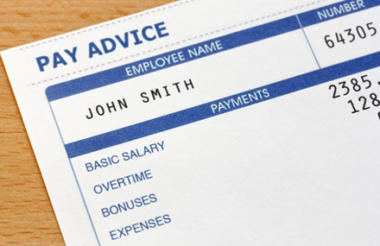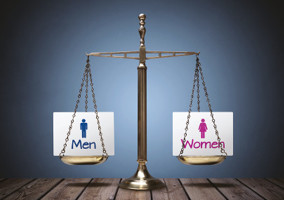David Kane, a freelance data scientist and researcher, has taken an in-depth look at what the gender pay gap data for charities shows.
The government has said that all companies employing more than 250 people must publish data about the gender pay gap in their organisation. The data has been helpfully published and is available to search and download. The deadline for submissions was 4th April, with 10,000 organisations publishing their data at the time of writing.
Charities aren't specifically identified in the data, but the data download does include company numbers, so it is possible to map across from companies to charities.
Doing this identifies 568 charities out of the original 10,000 organisations in the file. I've also assumed that any organisations without a company number are in the public sector (1,300 of those), leaving 8,100 private companies. Looking at the file these assumptions seem reasonable, but there will be some organisations incorrectly classified.
Women working for large charities are paid 8 per cent less than men
The data shows that the average gender pay gap for all organisations is 14.5 per cent, and for charities it is 8 per cent. Each organisation submits their mean and median pay gaps (the difference in average men and women's pay), these figures are the mean average of those means across the organisations.
This figure of 8 per cent compares favourably to the pay gap in private companies (15 per cent) and in the public sector (13 per cent), but obviously still represents a sizeable gap in pay between male and female employees.
20 per cent of large charities pay women more
We can also use the data to look at what proportion of organisations pay women more than men. For all organisations in the data the figure is 11 per cent, whereas for charities it is 20 per cent.
Across all pay quartiles large charities employ more women than men
The data also gives figures for what proportion of staff are men and women at various pay levels. It divides each organisation's employees into quartiles based on how much they are paid - the 25 per cent best paid employees, the 25 per cent worst paid employees and two bands in the middle.
There is some positive news here for charities. A majority of charities' employees are women, and this majority is kept across all salary bands - most of the best-paid quarter of employees are women. There is, however, still a difference in the proportion - 71 per cent of the lowest-paid employees of large charities are women, compared to 63 per cent of the highest-paid employees.
The data does not give separate information on the very highest paid employees - so it can't show the gender split at CEO/director level.
Caveat Corner
- Data is sourced from the Gender Pay Gap website, and used under the Open Government License v3.0
- Charity numbers are based on data from findthatcharity - this data comes from three charity regulators and is used under the Open Government License.
- Organisation type is determined by matching based on company numbers. This matching could be wrong in individual cases:
- charities sometimes have incorrect/missing company numbers
- company numbers can have odd formatting
- Public sector organisations are assumed based on those organisations without a company number which might be incorrect.
- The data may be incomplete. 10,000 organisations have submitted data, compared to a government estimate of 9,000 but there may still be some missing.
- You can download my amended data with charity numbers and organisation type added (CSV)
David Kane a freelance data scientist and researcher, specialising in data for, by and about charities and wider civil society. He has over ten years experience working with charity data, having worked for NCVO, CAST and the Greater London Authority.
|
Related articles










